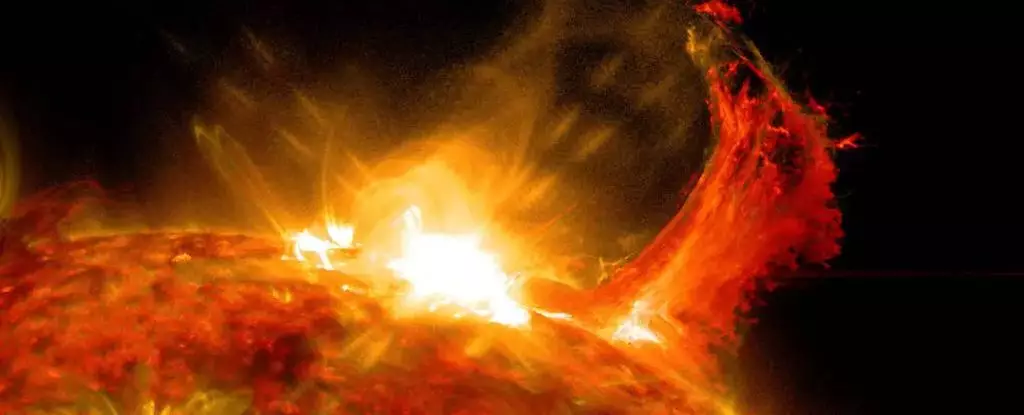At first glance, the Sun might appear to be an unwavering entity in our cosmos, a beacon of light that remains constant amidst the chaotic nature of the universe. However, beneath this seemingly placid exterior lies a turbulent ball of plasma, a hotbed of electrically charged gases in perpetual motion dictated by intricate magnetic forces. For solar physicists, this complexity presents a dual challenge: not only must they decipher the Sun’s erratic behavior, but they must also predict its profound effects on Earth. One of the most notorious of these phenomena is the coronal mass ejection (CME), an explosive release of energy that can have significant implications for our technological systems.
CMEs occur when the Sun’s magnetic field experiences sudden disturbances that cause vast amounts of plasma to be expelled into space. These masses can travel at astonishing speeds, sometimes reaching Earth in just a few days, depending on their trajectory. When these charged particles interact with Earth’s magnetosphere, they can provoke geomagnetic storms, leading to power outages, disruptions in satellite communications, and disturbances in GPS systems. The unpredictability of these solar events and their variations in strength complicate the task of accurately forecasting their occurrence and potential impacts.
The advent of artificial intelligence offers a glimmer of hope in this complex field. Researchers are turning to machine learning—an innovative approach that leverages extensive data sets to predict solar phenomena with greater accuracy than traditional methods. By analyzing historical data on solar activity, scientists can train algorithms to recognize patterns that typically elude conventional observational techniques.
A groundbreaking study spearheaded by Sabrina Guastavino from the University of Genoa marks a significant leap forward in the integration of AI with solar physics. The team applied machine learning algorithms to assess data from various solar events, focusing particularly on the activity surrounding the region labeled AR13664 during an intense solar storm in May 2024. This event included a powerful X8.7 class flare, an occurrence that underscored the need for precise predictive capabilities.
The researchers’ primary aim was multifaceted: they sought to predict not only the occurrence of solar flares but also their temporal progression and the corresponding production of CMEs. The utilization of AI revealed intricate interrelations among these solar activities, enabling predictions that surpassed previous standards in accuracy. Their findings showcased a remarkable reduction in uncertainties commonly associated with traditional forecasting methods.
The implications of this research are profound, especially considering the vulnerabilities of our technology-dependent society. With the ability to predict the timing and intensity of CMEs more accurately, stakeholders—from power grid operators to satellite companies—can devise strategies to mitigate potential disruptions. The enhanced capability to foresee geomagnetic storms may not only safeguard infrastructure but also enrich our understanding of solar-terrestrial interactions.
Moreover, the heightened accuracy in predicting auroral activity may captivate the interests of both scientists and casual sky watchers. While the spectacular displays of the Northern and Southern Lights—the auroras—are often considered a natural wonder, they can also serve as significant indicators of solar activity and its impacts on Earth. A more sophisticated forecasting model could provide the public with timely alerts, transforming our approach to experiencing and appreciating these celestial events.
As we enter an era marked by the convergence of technology and natural sciences, the application of machine learning to solar physics could revolutionize our comprehension of the Sun and its effects on our planet. With an arsenal of advanced algorithms at their disposal, researchers are positioned to tackle challenges once deemed insurmountable, paving the way for more reliable predictions of solar phenomena. The Sun, with its enigmatic nature, continues to be a source of fascination, and advancements in technology are enabling us to peel back the layers of its mysteries like never before. As we improve our understanding, we stand on the brink of forging deeper connections between solar dynamics and their terrestrial consequences, heralding a promising future for solar science.

